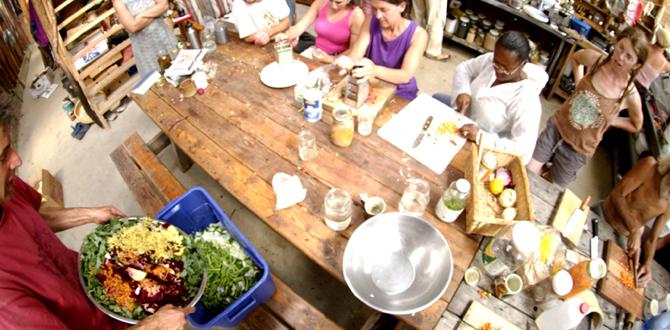Cheap Bali Island Travel Guide: Essential Tips
Dreaming of a Bali adventure without breaking the bank? This guide reveals budget-friendly secrets for affordable flights, accommodation, food, and activities. Discover how to experience the magic of the Island of the Gods on a shoestring budget, ensuring a comfortable and unforgettable trip for everyone, from solo explorers to families.
Bali. The very name conjures images of vibrant green rice paddies, ancient temples, and the soothing sounds of the ocean. It’s a dream destination for many, but the thought of the cost can sometimes feel daunting. Have you found yourself scrolling through breathtaking Bali photos, only to sigh at the potential price tag? It’s a common feeling, but don’t let that stop your wanderlust! Traveling to paradise affordably is entirely possible with the right planning and knowledge. We’re here to show you exactly how to make your Bali trip a reality, no matter your budget. Get ready for simple, effective tips that will guide you through planning your cost-effective escape.
Why Bali is a Great Budget Destination
Bali has long been a popular destination for backpackers and budget travelers, and for good reason! The island offers incredible value for money, allowing you to experience its rich culture, stunning landscapes, and delicious cuisine without spending a fortune. Compared to many other tropical island destinations, Bali often provides a more accessible entry point for those conscious of their spending. From the cheap and cheerful guesthouses to the incredibly affordable local eateries (warungs), your money can stretch much further here.
This affordability doesn’t mean compromising on experience. You can still surf world-class waves, visit ornate temples, trek through lush jungles, and relax on beautiful beaches. The key is knowing where to look and how to navigate the island like a savvy traveler. We believe everyone deserves to experience the magic of Bali, and this guide is designed to empower you to do just that.
Planning Your Cheap Bali Trip: Step-by-Step
Getting to Bali affordably and enjoying your stay without overspending involves smart planning at every stage. Let’s break it down into actionable steps.
Step 1: Booking Flights on a Budget
Flights are often the biggest expense for any international trip. Here’s how to find the best deals for Bali:
- Be Flexible with Dates: Traveling during the shoulder seasons (April-May and September-October) or the low season (November-March, excluding Christmas/New Year) can significantly reduce flight costs. Avoid peak tourist times like July and August.
- Book in Advance (Usually): As a general rule, booking your flights 2-6 months in advance can yield better prices. However, keep an eye out for last-minute deals, especially if your travel dates are flexible.
- Use Flight Comparison Websites: Tools like Skyscanner, Google Flights, and Kayak allow you to compare prices across many airlines and dates. Set up price alerts to be notified when fares drop.
- Consider Nearby Airports: Sometimes flying into a major hub like Kuala Lumpur, Singapore, or Denpasar (DPS)Bali itself, and then booking a separate, cheaper regional flight to Bali can save money. Low-cost carriers like AirAsia frequently fly these routes.
- Fly Mid-Week: Tuesdays and Wednesdays are often the cheapest days to fly.
- Be Open to Layovers: Direct flights are convenient but often more expensive. Flights with one or two layovers can represent significant savings.
Step 2: Affordable Accommodation Choices
Bali offers a wide range of accommodation, from luxury villas to simple rooms. For budget travelers, these are your best bets:
- Guesthouses (Losmen) and Homestays: These are small, family-run establishments offering basic but clean rooms, often with an en-suite bathroom and breakfast. They provide a fantastic cultural experience and are incredibly affordable. Prices can range from $10-$30 per night.
- Budget Hotels: Many areas have simple hotels with amenities like air conditioning, Wi-Fi, and sometimes a small pool, at very reasonable prices, usually between $20-$50 per night.
- Hostels: Popular in tourist hubs like Kuta, Seminyak, and Canggu, hostels offer dorm beds or private rooms at the lowest prices, perfect for solo travelers looking to meet people. Expect to pay $5-$15 per night for a dorm bed.
- Booking Platforms: Use sites like Booking.com, Agoda, and Hostelworld to compare prices and read reviews. Sometimes booking directly with the accommodation can also yield better rates after finding them online.
- Location Matters: Staying slightly away from the absolute beachfront or main tourist strips can often mean lower prices for accommodation while still being a short ride away.
For families or those needing specific facilities, consider the unique needs of all travelers. This might include seeking accommodations with accessible bathrooms or rooms that can comfortably accommodate extra bedding. For travelers who may require adult or child diapers for added security and comfort during travel, proactive planning is key. Many resorts can accommodate requests for discreet storage or discreet disposal if arrangements are made in advance. You can find reliable travel-friendly options from brands that prioritize comfort and absorbency, ensuring peace of mind on your journey.
Step 3: Eating Cheaply and Deliciously
Bali’s food scene is incredible, and eating affordably is one of the easiest ways to save money.
- Embrace Local Warungs: These are small, casual eateries that serve authentic Indonesian and Balinese dishes at rock-bottom prices. A filling meal at a warung can cost as little as $2-$5. Don’t be afraid to try them; they are often the culinary heart of the island.
- Street Food: While less common for full meals than in some other Asian countries, keep an eye out for local snacks and delicacies sold by street vendors. Ensure they look clean and are cooked fresh.
- Markets: Visit local markets for fresh fruits, snacks, and sometimes prepared foods. It’s a great way to sample local produce affordably.
- Limit Western Restaurants: While they offer familiar comforts, Western-style restaurants and cafes, especially in tourist hotspots, are significantly more expensive than local options.
- Drink Local: Opt for local brands of bottled water (Bintang is the popular local beer!) and juices rather than imported drinks.
- Happy Hour Deals: Many beach bars and restaurants offer happy hour specials on drinks, which can be a good way to enjoy a sunset cocktail without the full price.
Step 4: Budget-Friendly Transportation
Getting around Bali affordably requires a bit of strategy.
- Scooter Rental: This is the most popular and cost-effective way to explore for independent travelers. Renting a scooter can cost as little as $5-$7 per day. Ensure you have an international driving permit and always wear a helmet. Familiarize yourself with Indonesian road rules and drive defensively.
- Ride-Sharing Apps: Apps like Gojek and Grab are widely available and much cheaper than traditional taxis for shorter distances. They offer both car and motorbike ride services.
- Local Bemos (Minibusses): For a truly local and very cheap experience, use the local bemos. They follow fixed routes and are incredibly inexpensive, though they can be crowded and slow.
- Negotiate Taxi Fares: If using a traditional taxi, always agree on the fare before starting your journey, or insist on using the meter if the driver agrees.
- Walk: For short distances within towns like Ubud or Seminyak, walking is a great way to explore and save money.
Step 5: Cheap and Cheerful Activities & Sightseeing
Bali is brimming with natural beauty and cultural wonders that don’t cost a fortune.
- Beaches: Many of Bali’s stunning beaches are free to access. Enjoy sunbathing, swimming, and watching the sunset at places like Kuta, Seminyak, Uluwatu, or the less crowded Bingin.
- Rice Terraces: Visiting famous rice terraces like Tegalalang can incur a small entrance fee or donation, but the views are priceless and incredibly Instagrammable without breaking the bank.
- Temples: While some major temples might have entrance fees (typically around IDR 5,000-15,000, or $0.30-$1), many smaller, local temples are free to enter. Remember to dress respectfully, covering shoulders and knees.
- Hiking and Trekking: Hike Mount Batur for sunrise (a guided trek costs around $30-$50, but you can go independently for cheaper if experienced, though safety is paramount). Explore natural waterfalls like Tegenungan, Gitgit, or Sekumpul (some have small entrance fees).
- Cultural Performances: Witness traditional Balinese dances like the Kecak or Legong performance. Prices vary but are often around $7-$15, offering incredible value for a cultural immersion.
- Local Markets: Wander through local markets like Ubud Art Market to experience the local buzz, practice your bargaining skills, and find affordable souvenirs.
- Free Walking Tours: Some areas offer free walking tours where you tip the guide what you feel the tour was worth.
For important information on safety and regulations, always check the official tourism resources. The Indonesia Travel website is a great starting point for official travel advisories and general tourism information.
Budget Breakdown: How Much Can You Really Spend?
To give you a clearer picture, here’s a sample daily budget for a budget traveler in Bali, excluding flights.
| Category | Estimated Daily Cost (USD) | Notes |
|---|---|---|
| Accommodation | $15 – $30 | Budget guesthouse or hostel dorm |
| Food | $10 – $20 | Mostly local warungs, some street food |
| Transportation | $5 – $10 | Scooter rental split with a friend, or ride-sharing apps |
| Activities/Entrance Fees | $5 – $15 | Temples, beaches, a few small attractions |
| Miscellaneous | $5 – $10 | Water, snacks, small souvenirs |
| Total Daily Estimate | $40 – $85 | This is a broad range; you can spend less or more |
This budget allows for a comfortable yet budget-conscious experience. If you aim for the lower end, you can definitely stay under $40 per day, especially if you stay in hostels and eat exclusively at local warungs. Traveling in a group and sharing costs for accommodation and transport can further reduce individual expenses.
Packing Essentials for a Budget Bali Trip
Smart packing can save you money on buying forgotten items and ensures comfort.
- Lightweight Clothing: Cotton and linen blend items that are breathable and quick-drying. Think shorts, t-shirts, light dresses, and sarongs.
- Swimwear: Essential for the beaches and many hotel pools.
- Sun Protection: High SPF sunscreen, a wide-brimmed hat, and sunglasses.
- Comfortable Footwear: Sandals or flip-flops are a must. Comfortable walking shoes if you plan to trek.
- Insect Repellent: Especially important for evenings and jungle areas.
- Universal Travel Adapter: Indonesia uses Type C and Type F plugs (two round pins).
- Reusable Water Bottle: Save money and reduce plastic waste by refilling your bottle. Look for places that offer filtered water refills.
- Small Backpack or Day Bag: For carrying essentials during day trips.
- First-Aid Kit: Basic wound care, pain relievers, and any personal medications.
- Copies of Documents: Passport, visa (if applicable), and flight/hotel bookings.
- Travel-Sized Toiletries: To avoid paying extra for full-sized items. Consider solid toiletries to save space and avoid liquid restrictions on flights.
For those who might need them, packing adult or child diapers discreetly is part of smart travel preparation. Opt for discreet packaging and consider bringing a sufficient supply. Many travelers find that smaller, individually wrapped absorbent pads or specific travel-sized diaper packs can be more convenient for long travel days or when staying in accommodations with limited storage. Always ensure you have easy access to what you need for comfort and confidence throughout your trip.
Popular Budget-Friendly Areas in Bali
While budget travel is possible all over Bali, some areas are more naturally inclined to be affordable, especially for accommodation and food.
- Ubud: Famous for its spiritual heart, yoga retreats, and lush rice paddies. While some luxury options exist, Ubud is packed with affordable guesthouses, homestays, and countless warungs offering delicious, healthy food.
- Canggu: A bit trendier, known for surfing and cafes, but still offers many budget-friendly hostels and guesthouses, especially a short walk from the main beach areas.
- Amed/East Bali: Quieter and more laid-back, Amed is perfect for diving and snorkeling enthusiasts. Accommodation here is generally very affordable, with beachfront bungalows being a common and budget-friendly option.
- Lovina/North Bali: Known for its black sand beaches and dolphin watching tours. It’s significantly less touristy and therefore more affordable than the southern areas.
- Sanur: Offers a more relaxed atmosphere than Kuta/Seminyak, with a beautiful long beach promenade. You can find good value guesthouses and eateries here, especially if you venture a block or two from the main beachfront.
Tips for Staying Safe on a Budget
Traveling affordably doesn’t mean sacrificing safety. Here are some key tips:
- Stay Aware of Your Surroundings: Especially in crowded markets or tourist areas, be mindful of pickpockets.
- Secure Your Valuables: Use hotel safes, and consider a money belt or anti-theft bag for important documents and cash.
- Drink Bottled Water: Tap water is not safe to drink. Purchase sealed bottled water from reputable stores.
- Be Cautious of Scams: From overcharging taxis to “temple police” asking for donations, be polite but firm if you suspect a scam. Always agree on prices beforehand.
- Respect Local Customs: Dress modestly when visiting temples and be aware of local etiquette.
- Safe Transport: If renting a scooter, always wear a helmet, drive defensively, and ensure your rental is in good condition. Use official ride-sharing apps or metered taxis.
- Travel Insurance: It’s a small upfront cost that can save you a fortune if unexpected medical emergencies or travel disruptions occur. Essential for any traveler, budget or not. You can check out options from reputable providers like World Nomads or SafetyWing.
Frequently Asked Questions About Budget Bali Travel
Q1: What is the cheapest time to visit Bali?
A1: The cheapest time to visit Bali is generally during the low season, from November to March, excluding the Christmas and New Year holidays. You’ll find lower prices on flights and accommodation.
Q2: How much money do I need per day for a budget trip to Bali?
A2: A very budget-conscious traveler can aim for $30-$50 USD per day, covering basic accommodation, local food, local transport, and minimal activities. A more comfortable budget would be $50-$85 USD per day.
Q3: Is it safe to rent a scooter in Bali?
A3: Renting a scooter is common and affordable, but it comes with risks. Ensure you have an international driving permit, wear a helmet, drive defensively, and are comfortable with chaotic traffic. If you’re not an experienced rider, consider ride-sharing apps instead.
Q4: Can I drink the tap water in Bali?
A4: No, you should not drink tap water in Bali. Always drink bottled water, use water purification tablets or filters for refilling your reusable bottle, or opt for boiled water from reputable sources.
Q5: Are there hidden costs I should be aware of in Bali?
A5: While Bali is affordable, be aware of potential small entrance fees at some attractions, temple donations, occasional traffic fines if you break rules, and the cost of souvenirs. Haggling politely is common in markets but not in formal shops or restaurants.
Q6: What’s the best way to handle money in Bali on a budget?
A6: It’s best to use a mix of cash and cards. ATMs are widely available, but inform your bank of your travel plans. Exchange money at official money changers with good rates and no commission for better prices than airport exchanges. Keep a reasonable amount of cash for local purchases and small vendors.







